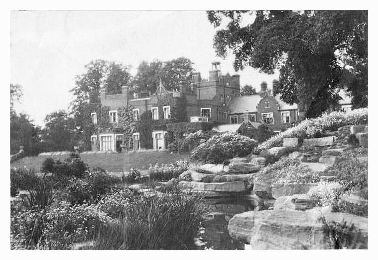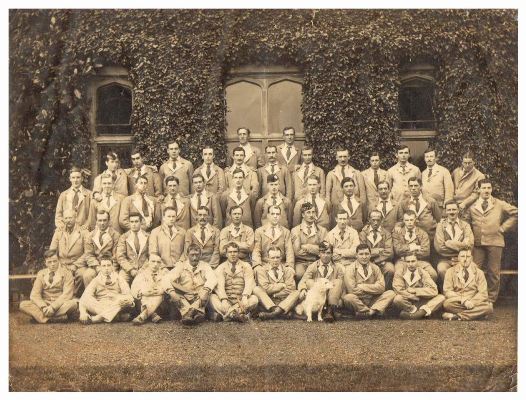The Bury, Kings Walden
March, 2008
Dawn Worley (samwell @t westnet.com.au) of Bribie Island, Queensland, Australia writes My Grandfather was wounded in France in W.W.1 and was sent to recover at Kings Walden Bury. I have photo taken outside this place of the soldiers and sent to his wife by Sister Reynolds. It is dated Oct. 1916. Would like more history of this place and especially how it came to be used for the recovery centre for soldiers.
Richard Holden was born at Aston under Lyne, Lancashire, and came from London on the "Cloncurry" which arrived in Brisbane 3.2.1886. He was 18 years old. He understated his age when he joined the 9th Battalion, Australian Imperial Forces. and after service at Gallipoli, Egypt and France where he was wounded at Moquet Farm and he was discharged medically unfit 23.5.1917. He had been wounded before twice [I don't know where] and I assume this was when he was pictured at Kings Walden before being returned to active service.
 |
Dawn also provided the two photographs shown on this page,
both of which have needed some reconstruction.
First of all the house: The Victoria County History records that
after the death of Charles Cholmondley Hale
in in 1884 King's Waldenbury was purchased by Mrs
Hinds, and in 1891 it was brought by Mr
Thomas Fenwick Harrison. In the 1914
Kelly's Directory for
Hertfordshire it is stated that "The Bury, a handsome Elizabethan
mansion of brick, standing in an extensive and well timbered deer park of 290
acres, is the seat of Thomas Fenwick Harrison
esq. J.P. lord of the manor and principal landowner." In 1917 he had
been replaced by Captain (Major in 1922) John Fenwick
Harrison.
The Buildings of England:
Hertfordshire reveals that
the house at the time your Grandfather was there had been substantially
rebuilt in 1889-90 and it was replaced in 1969-70 by a neo-Georgian mansion.
 |
Dawn writes:
Grandfather is the first person on the left in second
row of the picture. I have his service medals which he gave to me when
I was a child. When the First World War started virtually all of Hertfordshire became a vast army camp (See The London Gunner come to Town). Ordinary householders with a spare bedroom found that they were expected to accommodate soldiers, and my grandfather had an officer billeted in his house and a medical unit in his outbuildings. Large houses were required to make space available - for soldiers, horses in the stables, etc.- often with tented encampments in their parks. As the war progressed army camps of wooden huts were constructed and many of the large houses became hospitals or convalescent homes for the large number of injured soldiers. I have no specific information on what happened at The Bury, Kings Walden - but none of the patients show signs of serious injury and it may have catered for minor injuries where there was a good prospect of return to active duty. It would be interested to know if any of the other soldiers were Australian. |
There are web pages for Kings Walden and the Military Hospitals in World War One.
If you can add to the information given above tell me.
